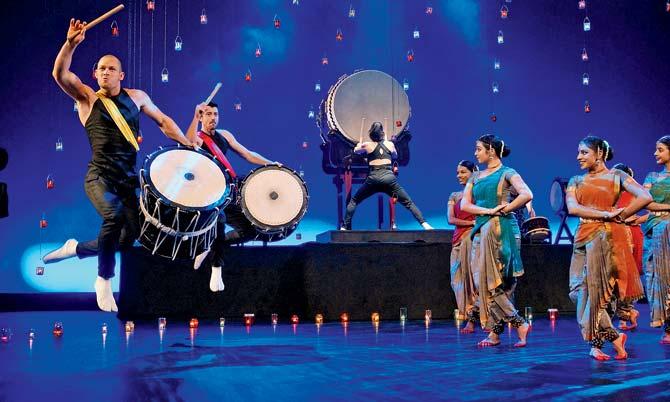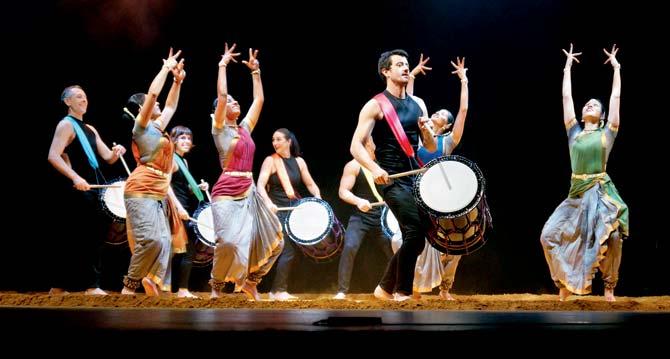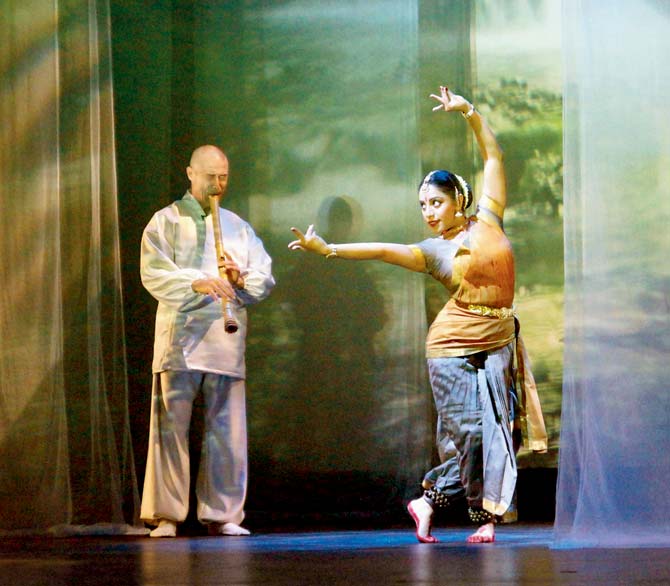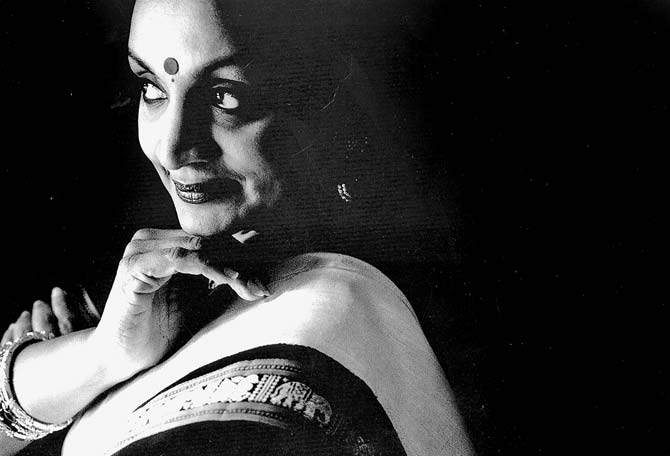A 14-member ensemble from Australia will cast a spell with its Indo-Japanese act using drums, flute and dance derived from Bharatanatyam and Kuchipudi


A scene featuring taiko drummers with katsugi-okedo, a drummer playing odaiko and the dancers
ADVERTISEMENT
Under hazy blue and yellow lights, the stage vibrates with rustic sounds of Japanese taiko drums and sweet, metallic notes of ghungroos as an ensemble plays off both the performance styles on a floor covered with dirt. Connected to the earth through a strong stance, the taiko drummers produce powerful sounds using drum sticks. Flecks of dust fly off the ground as six performers match their beats with fluid Indian Classical dance moves derived from Bharatanatyam and Kuchipudi.

The scene, Of The Fields, transforms the stage floor into a circle of dirt where the dancers and drummers interact
The lights dim, the scene changes and Riley Lee, a grandmaster of the Japanese shakuhachi flute, plays a meditative melody on the end-blown bamboo flute, introduced to Japan by China back in the late seventh century. The two scenes, Of The Fields and Cascading Waterfall, are part of the eight that comprise an 80-minute performance, Chi Udaka. Pieced together by two Australian companies, Taikoz and Lingalayam Indian Classical Dance Company, it debuts in Mumbai next week as part of an India tour sponsored by the Australian Government, the Australia India Council and ArtsNSW.

Riley Lee, grandmaster of the Japanese shakuhachi flute plays solo
The back story
The seed for Chi Udaka — Chi means earth in Japanese and Udaka means water in Sanskrit — was sown 20 years ago, when Anandavalli, the choreographer and artistic director of Lingalayam, watched Lee at a performance. “I was mesmerised and intrigued to discover that he played with taiko players. It was a perfect partnership that honoured the traditional roots of their music, while allowing their individual artistic practice to grow,” says the dancer, who approached Ian Cleworth, the artistic director at Taikoz, in 2011 to collaborate for an Indo-Japanese performance, which shaped up as Chi Udaka.

Dancer-choreographer Anandavalli
The scenes
Comprising a Sydney-based 14-member ensemble — with six dancers, five taiko players and three musicians on shakuhachi, vocals and cello — the performance celebrates life as experienced in the course of a single day. “The scenes reflect the mood, character and feelings of different times of the day and night — from the breath of a faint breeze in the morning to the intensity of the noon sun and a final moment of exhalation at midnight,” informs Cleworth.
Mridangam connect
Cleworth composed an 80-page long original score for the performance. The music improvises upon Wadaiko rhythms used in taiko drumming and Honkyoku music (originally played by Zen monks) used for the Japanese flute. It also takes cues from mridangam rhythms. “Anandavalli introduced me to rhythm configurations. Our high-pitched shime-daiko (a small Japanese drum) corresponds to the right hand of the mridangam and our lower taiko corresponds to the left hand of the mridangam. However, it is not an imitation of the instrument,” he shares.
Dance to the beat
Choreographing the performance was a challenge, reveals Anandavalli. “Of The Fields is a complex score. When Taikoz first played Ian’s score at the rehearsal, I got an instant headache. I could not fathom how to choreograph the score. I had to isolate my thinking process and start from the basics in stringing together rhythmical patterns that would fit into it. Riley watched the rehearsal process and commented that he didn’t know that dancers’ feet could move that fast!” she recounts.
Lee uses the oldest style of playing the shakuhachi, developed within a Zen Buddhist context. “The similarity between the shakuhachi and most Indian flutes is that they require patience, dedication, hours of practice and the guidance of a good teacher,” says the artiste, who became the first non-Japanese to attain dai shihan (grandmaster) rank in 1980, and co-founded Taikoz with Cleworth in 1997.
Cleworth sums up, “Despite its derivation and respect towards traditional elements, Chi Udaka reflects who we are as modern Australian artistes. It strives to communicate universal ideas.”
 Subscribe today by clicking the link and stay updated with the latest news!" Click here!
Subscribe today by clicking the link and stay updated with the latest news!" Click here!






